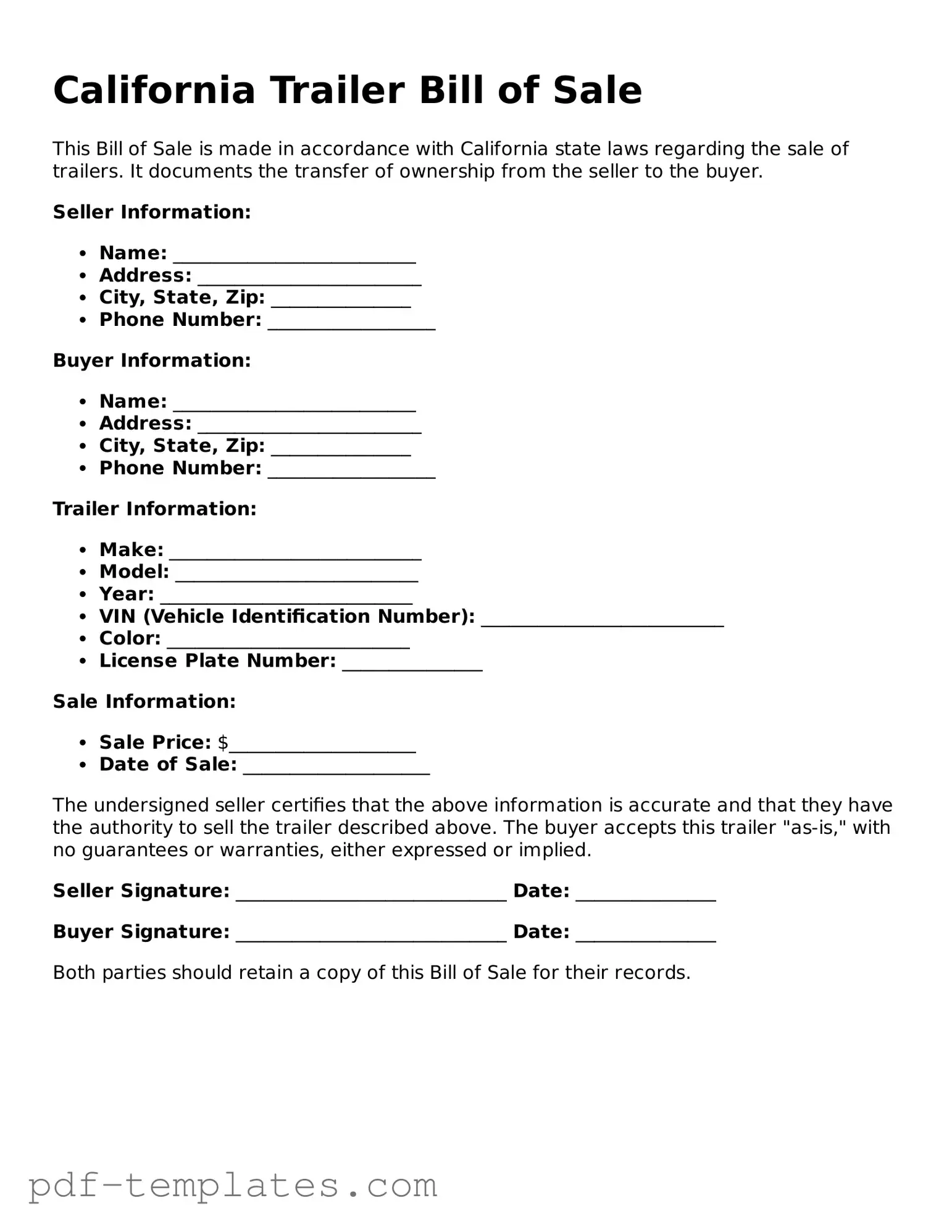The California Vehicle Bill of Sale is similar to the Trailer Bill of Sale in that both documents serve as proof of transfer of ownership for vehicles or trailers. They include essential details such as the buyer's and seller's information, the vehicle or trailer's description, and the sale price. Both forms are important for registration purposes and may be required by the Department of Motor Vehicles (DMV) to complete the transfer process legally.
The California Boat Bill of Sale also shares similarities with the Trailer Bill of Sale. Each document is designed to facilitate the transfer of ownership for a specific type of property. Both forms require information about the buyer and seller, as well as the item being sold, including identification numbers and sale price. Like the Trailer Bill of Sale, the Boat Bill of Sale is crucial for registering the boat with the appropriate authorities.
The California Motorcycle Bill of Sale serves a similar purpose to the Trailer Bill of Sale by documenting the sale and transfer of a motorcycle. Both documents require details about the parties involved, the item being sold, and the transaction amount. They both provide legal protection for both the buyer and seller, ensuring that ownership is officially recorded and recognized.
The California ATV Bill of Sale is another document akin to the Trailer Bill of Sale. It records the sale of all-terrain vehicles, requiring similar information such as the buyer and seller’s details and a description of the ATV. This document is essential for transferring ownership and may be needed for registration with local authorities, just like the Trailer Bill of Sale.
The California Mobile Home Bill of Sale is comparable to the Trailer Bill of Sale in that it facilitates the transfer of ownership for a specific type of property. Each document requires pertinent details about the buyer, seller, and the mobile home or trailer being sold. Both forms help protect the rights of the parties involved and provide a record of the transaction.
The California Snowmobile Bill of Sale is similar to the Trailer Bill of Sale in that it documents the sale of a snowmobile. Each form includes essential information such as the buyer's and seller's identities and the details of the snowmobile. This document is necessary for legal ownership transfer and may be required for registration with state authorities.
The California Recreational Vehicle (RV) Bill of Sale is akin to the Trailer Bill of Sale as it serves to document the sale of an RV. Both forms require similar information regarding the buyer and seller and the vehicle being sold. This documentation is vital for ensuring that the ownership transfer is recognized legally and can be used for registration purposes.
The California Farm Equipment Bill of Sale shares similarities with the Trailer Bill of Sale by providing a record of the sale of farm machinery. Both documents require specific details about the buyer, seller, and the equipment being sold. They serve as legal proof of the transaction and are important for any future disputes regarding ownership.
The California Personal Property Bill of Sale is also comparable to the Trailer Bill of Sale. This document is used for the sale of various personal items, including trailers. Both forms require the same basic information about the buyer, seller, and the item being sold, ensuring a clear record of the transaction and protecting the rights of both parties.
Finally, the California Business Bill of Sale is similar to the Trailer Bill of Sale in that it documents the sale of a business or its assets. While the context may differ, both documents require detailed information about the parties involved and the items being sold. This ensures that the transaction is legally recognized and provides protection for both the buyer and seller.
